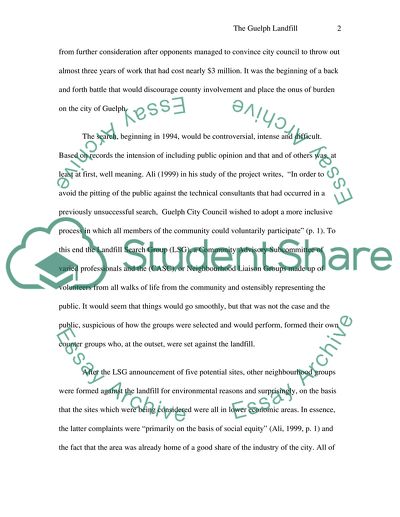Cite this document
(The Guelph Landfill Research Proposal Example | Topics and Well Written Essays - 3000 words - 1, n.d.)
The Guelph Landfill Research Proposal Example | Topics and Well Written Essays - 3000 words - 1. Retrieved from https://studentshare.org/environmental-studies/1751012-public-participation-in-guelph-landfill-search-process
The Guelph Landfill Research Proposal Example | Topics and Well Written Essays - 3000 words - 1. Retrieved from https://studentshare.org/environmental-studies/1751012-public-participation-in-guelph-landfill-search-process
(The Guelph Landfill Research Proposal Example | Topics and Well Written Essays - 3000 Words - 1)
The Guelph Landfill Research Proposal Example | Topics and Well Written Essays - 3000 Words - 1. https://studentshare.org/environmental-studies/1751012-public-participation-in-guelph-landfill-search-process.
The Guelph Landfill Research Proposal Example | Topics and Well Written Essays - 3000 Words - 1. https://studentshare.org/environmental-studies/1751012-public-participation-in-guelph-landfill-search-process.
“The Guelph Landfill Research Proposal Example | Topics and Well Written Essays - 3000 Words - 1”, n.d. https://studentshare.org/environmental-studies/1751012-public-participation-in-guelph-landfill-search-process.


